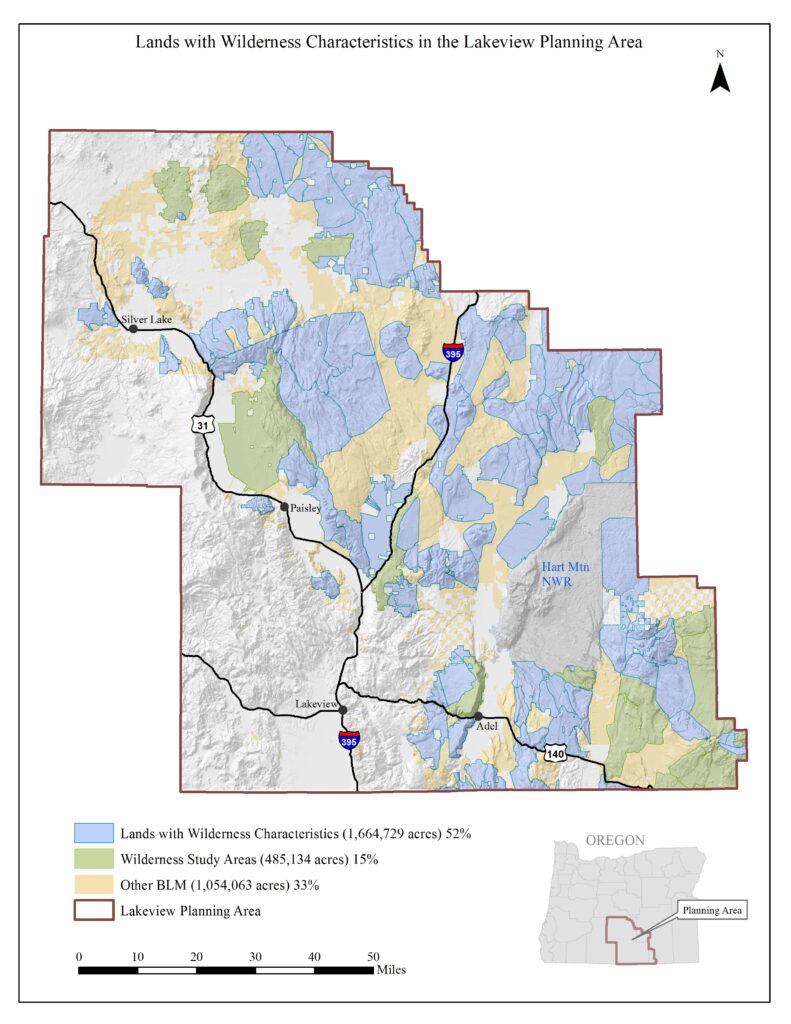Lands with Wilderness Characteristics
Alan Majchrowicz Website
The Scope:
The Lakeview RMP will establish how the Bureau of Land Management (BLM) will manage wilderness values in a set of areas known as Lands with Wilderness Characteristics.
What are LWCs?
Lands with Wilderness Characteristics (LWC) are areas that have been inventoried and found to meet Congress’s definition of “a wilderness” from the 1964 Wilderness Act. However, LWC areas are not designated protected areas like Wilderness areas or Wilderness Study Areas. Instead, the management of these areas will be determined by this Resource Management Plan.
What characteristics define wilderness?
According to the Wilderness Act, wilderness quality lands must possess:
- Sufficient size – generally 5,000 acres or larger (but this can be smaller if the area is adjacent to an existing Wilderness Study Area or Wilderness area).
- Naturalness – affected primarily by the forces of nature.
- Solitude and/or primitive recreation – outstanding opportunities for either solitude or primitive and unconfined recreation exist.
What protection do wilderness values in LWC units have?
Unlike Wilderness or Wilderness Study Areas, the BLM is not necessarily required by the Wilderness Act or other laws to preserve wilderness values in LWC units. However, the BLM can choose to manage LWC units to retain their wilderness values through a Resource Management Plan.
ONDA’s take:
The BLM should preserve and protect wilderness values in LWC units. Selecting a resource management plan alternative that protects wilderness values in LWC units also provides protection for important wildlife habitats, limits fragmentation of the sagebrush steppe ecosystem, and increases opportunities for quiet recreation such as hunting, fishing, hiking, backpacking and wildlife watching.

